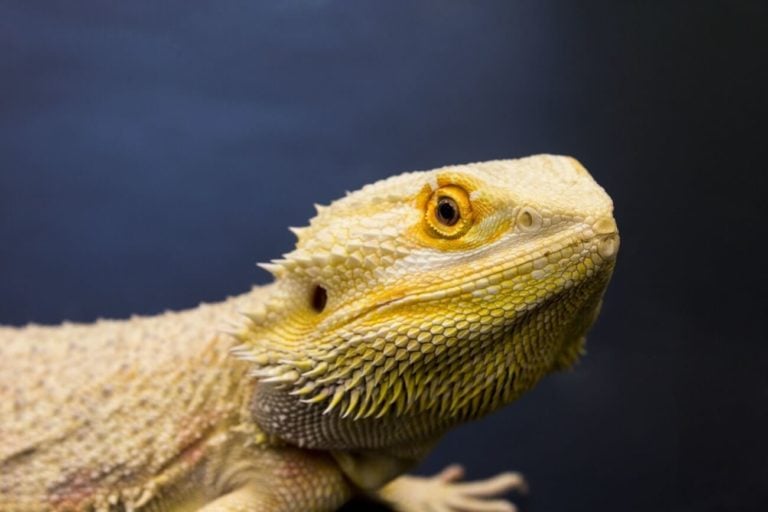Figuring out how to tell if your turtle is dying can be surprisingly tricky. There are a number of situations that will cause these reptiles to slow down, and determining which one is correct takes some work.
This guide will teach you how to tell if your turtle is dying, and what to do if you want to give them the best chance to survive.
Table of Contents
How To Tell If Your Turtle Is Dying
It’s often hard to tell if your turtle is dying or if they’re just sick.
If your turtle stops eating, has a change in appearance, seems lethargic, or is having trouble breathing, then there is a chance that your turtle is dying. However, these symptoms can also be caused by one of the many illnesses to which turtles are prone. If it’s unclear, we suggest calling your veterinarian with any questions or concerns.
Being aware of some of the early warning signs of a sick or dying turtle may help you to get the right help at the right time. In this section, we’ll go over a few things to look out for. Again, if your turtle shows any of the following signs, it doesn’t necessarily mean that your turtle is dying and cannot be helped. In many cases, the correct treatment is all it takes.
1. Loss Of Appetite
Turtles love to eat, so a turtle that has lost its appetite could be very ill or dying. Sometimes a turtle will naturally slow down on its eating (especially if it is a pregnant female), but one that completely stops eating is probably dying.
An egg-bound female or a turtle with a digestive issue will usually stop eating. These issues are potentially fatal, so get your turtle to the veterinarian if you notice this behavior.
2. Lethargic Behavior
With outdoor turtles, sluggish behavior is usually a sign of impending hibernation. However, pet turtles that are kept indoors don’t hibernate very often, so lethargic behavior is almost always the sign of a serious medical condition or even approaching death.
If your turtle seems more sluggish than usual, try tempting it with some of its favorite treats. If it still doesn’t move or attempt to get to the food, then an emergency trip to the vet will be needed. A lethargic turtle is usually a very sick turtle.
3. Trouble Breathing
A turtle with a breathing problem is never a good thing. In fact, breathing issues are often a symptom of pneumonia or other potentially fatal respiratory infection.
Signs of a respiratory infection include audible wheezing, nasal discharge, sneezing or labored breathing. Turtles die from these kinds of infections all the time, so get them immediate medical care if you notice these symptoms.
4. There’s An Infected Shell
An infected shell can often mean that your turtle is dying. Since a turtle’s shell is actually a part of a turtle’s body, any kind of shell infection can become fatal in no time. Infections are often caused by bites from other turtles, random wounds, an unbalanced diet, or an unclean tank environment.
Open wounds are very prone to bacterial and fungal infections, so get your turtle checked out by a vet right away.
5. A Change In Feces
We know it’s not the most fun part of turtle ownership, but it’s very important to pay attention to your pet reptile’s feces. Normal turtle poop should be fairly solid and brown in color, and it should not have a very strong smell.
However, if you notice diarrhea, a bad odor, blood in the feces, worms, or other parasites or constipation, then your turtle will require medical attention. Constipation could be the sign of a dangerous intestinal blockage, and diarrhea often means an infection or an issue with parasites.
6. Your Turtle Can’t Swim Straight
Turtles are amazing swimmers, but not if they are dying. In fact, swimming sideways or other swimming difficulties are red flags that often point to something serious with your turtle.
Sideways swimming is usually caused by some form of stomach issue that creates bloating, but it can also stem from weakness caused by one of the many common turtle diseases. If your turtle is behaving awkwardly in the water, then your turtle may already be quite ill or even dying. Call your veterinarian immediately before the situation gets worse.
7. Skin Problems Or Bubbling
A change in your turtle’s skin is a fairly good sign that something is wrong. If you notice any type of wound, abscess, or swollen area, then you’ll want to get your pet to the veterinarian right away. In many cases, these conditions are easily treated with medication. Left too long, however, and your turtle’s chances for survival decrease considerably.
Bubbling is also a sign that your turtle is dying or suffering from some form of illness. This condition is when your turtle has some kind of discharge coming from its nose, mouth or eyes. Discharge from the nose or mouth is usually caused by a respiratory infection. Thick, pussy discharge from the eyes is often a sign of a Vitamin A deficiency.
If you notice skin changes or bubbling, then a trip to the vet could save your pet’s life.
How Tell The Difference Between Dying And Hibernating
It’s often difficult to tell if your turtle is dying or simply hibernating. However, there are some subtle differences, and we will discuss a few of them here.
If your turtle is hibernating, then you’ll notice that it is eating a lot less, is less active, is moving more slowly, and its breathing will be slower.
On the other hand, a dying turtle will usually stop eating altogether, it will stop moving, will swim sideways, and it will appear to be very disoriented. You may also notice a strange skin or shell coloration, very labored breathing, little to no movement, and shy behavior.
The best thing you can do if you are not sure whether your turtle is hibernating or dying is to ask your veterinarian.
What Can You Do If Your Turtle Is Dying?
If you suspect that your turtle may be dying, there are several steps that you can take to give your little friend a fighting chance. Following these steps doesn’t guarantee that your turtle will get better, but there’s always the possibility that your turtle will rally and make a complete recovery.
Get The Proper Treatment
If you have any fear that your turtle might be dying, the most important step you can take is to make an appointment with your veterinarian right away. If your turtle needs medication or another kind of treatment, then a veterinarian will be able to prescribe the appropriate medicine and show you how to administer it. Your turtle may also need ongoing vitamins or supplements, and a veterinarian can guide you in the right direction.
Pay Attention To The Environment
Another very critical step to take is to keep its tank very clean. This means that food should be removed right away, the correct temperature and humidity levels should be maintained, and all waste should be cleaned out several times a day. This will prevent the water from becoming cloudy and unhealthy.
Also, make sure to keep your turtle’s tank in a very quiet spot where it won’t feel any stress. Sometimes it helps to raise the temperature within the enclosure, so you should ask your vet if this is appropriate for your turtle.
Be Careful With The Diet
It can often help to change up your turtle’s diet. This can mean giving it either a little more or a little less protein, adding more fiber or adding supplements and vitamins. Check with your vet to see which dietary changes are the best for your turtle.
What Does A Dead Turtle Look Like?
While the answer to this question might seem pretty obvious, it’s not always so easy to tell what a dead turtle looks like. At first glance, a turtle that’s hibernating and one that has passed away can actually look rather similar.
But once you take a good look you’ll likely be able to tell. A dead turtle will not move or respond if you touch it, it will feel cold to the touch, it may feel stiff, and its skin may appear kind of shriveled. Other signs to look for are sunken eyes, rotten skin, or limp legs.
If you’re not sure, it’s worthwhile to take your turtle to the vet. It’s possible that your turtle is only very sick and not yet dead. Taking this step could save your turtle’s life.
What Should You Do With A Dead Turtle?
If you have a turtle that’s passed away, then you may be wondering what to do with it. In our opinion, the best thing to do with a dead turtle is to bury it. While some places offer cremation services for turtles, it can be just as nice to bury it in a beautiful spot in your yard. Put pretty flowers there, set up a nice memorial stone, and create a space that shows respect and demonstrates the love you had for your special pet.
Never throw your turtle into a lake or other body of water. If your turtle was sick, then other turtles or animals could potentially become sick as well.
Conclusion
Now that you know how to tell if your turtle is dying, you’ll be able to act quickly and give your pet the best possible chance.
If you have any questions, reach out to your vet. They’ll be able to help you on this topic better than we can!



